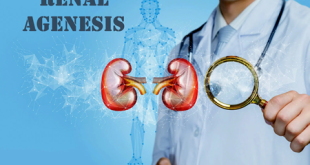Definition
Turner syndrome is a chromosomal condition that alters development in females. Women with this condition tend to be shorter than average and are usually unable to conceive a child (infertile) because of an absence of ovarian function. Other features of this condition that can vary among women who have Turner syndrome include: extra skin on the neck (webbed neck), puffiness or swelling (lymphedema) of the hands and feet, skeletal abnormalities, heart defects and kidney problems.
Women with turner syndrome shows webbed neck
Types of turner syndrome
All cells are affected and the abnormality can occur because
- One entire X chromosome is missing – monosomy X or 45,X- nearly 50% of patients have this condition.
- The X chromosome is present, but is missing a portion or is rearranged – partial monosomy.
Only some cells are affected – mosaic Turner syndrome or mosaicism.
- Cells with monosomy X occur along with normal (46,XX cells), or those with partial monosomies or those that have a Y chromosome (46,XY).
- Mosaicism occurs in 67-90% of the affected individuals.
History
The history of Turner syndrome began in 1938, when Henry Turner described 7 patients between the ages of 15 and 23, who were referred to him for dwarfism and lack of sexual development. He treated them with pituitary extracts, but they were ineffective.
Since then, many studies have evaluated Turner syndrome in greater detail and added to our knowledge base. An international multidisciplinary workshop was convened in March 2000, in Naples, Italy, in conjunction with the Fifth International Symposium on Turner Syndrome, to update the comprehensive recommendations on the diagnosis of Turner syndrome that were originally published in 1994.
Turner syndrome, also referred to as Ullrich-Turner syndrome, is a genetic disorder in which an X chromosome is missing or structurally abnormal and is not caused by a growth hormone deficiency.
Epidemiology about Turner’s syndrome
Turner’s syndrome occurs equally in all races and regions of the world. It is sporadic in occurrence except for rare cases in which a small X chromosome deletion may be passed from mother to daughter.
Less than 10% of cases are diagnosed antenatally; a further 20% are detected in infancy owing to the presence of lymphedema, neck webbing, or congenital heart defects. Relatively few patients are diagnosed during early childhood. The largest proportion of detection is at 10 to 16 years of age, owing to a combination of marked short stature and delayed puberty. Another 10% are diagnosed in adulthood, owing to secondary amenorrhea. There are similar ascertainment profiles for Europe and the US.
Whereas large-scale cytogenetic screening of newborns conducted in the 1970s and 1980s indicated a Turner’s syndrome incidence of about 1 case per 2500 live female births, more recent surveys suggest a lower incidence of about 1 case per 5000 live female births due to antenatal diagnosis associated with terminations of pregnancies.
Risk factors of turner syndrome
The loss or alteration of the X chromosome occurs randomly. Sometimes, it’s because of a problem with the sperm or the egg, and other times, the loss or alteration of the X chromosome happens early in fetal development.
Family history doesn’t seem to be a risk factor, so it’s unlikely that parents of one child with Turner syndrome will have another child with the disorder.
Causes of turner syndrome
Most people are born with two sex chromosomes. A boy inherits the X chromosome from his mother and the Y chromosome from his father. A girl inherits one X chromosome from each parent. If a girl has Turner syndrome, one copy of the X chromosome is missing or significantly changed.
The genetic alterations of Turner syndrome may be one of the following:
- The complete absence of an X chromosome generally occurs because of an error in the father’s sperm or in the mother’s egg. This results in every cell in the body having only one X chromosome.
- In some cases, an error occurs in cell division during early stages of fetal development. This results in some cells in the body having two complete copies of the X chromosome. Other cells have only one copy of the X chromosome, or they have one complete and one altered copy.
- Y chromosome material.In a small percentage of Turner syndrome cases, some cells have one copy of the X chromosome and other cells have one copy of the X chromosome and some Y chromosome material. These individuals develop biologically as girls, but the presence of Y chromosome material increases the risk of developing a type of cancer called gonadoblastoma.
Symptoms of turner syndrome
A shorter stature and lack of ovarian development are the most common characteristics of symptoms.
A woman may exhibit any of the following physical characteristics:
- A webbed neck – a variation of skin folds on the neck
- Arms that are slightly turned out at the elbow
- A low hairline in the rear of the head
Diagnosis and tests
A diagnosis is sometimes made during fetal development. Certain features on an ultrasound image may raise suspicion that your baby has Turner syndrome or another genetic condition affecting development in the womb. Prenatal screening tests that evaluate the baby’s DNA in the mother’s blood (cell-free fetal DNA testing or noninvasive prenatal screening) may also indicate an increased risk of Turner syndrome.
Your pregnancy and childbirth specialist (obstetrician) may ask if you’re interested in additional tests to make a diagnosis before your baby’s birth. One of two procedures can be performed to test for Turner syndrome:
- Chorionic villus sampling.This involves removal of a small piece of tissue from the placenta.
- In this test, a sample of the amniotic fluid is taken from the uterus.
Discuss the benefits and risks of prenatal testing with your doctor
Treatment and medication
The primary treatments for nearly all girls and women include hormone therapies:
- Growth hormone. Growth hormone therapy is recommended for most girls with Turner syndrome. The goal is to increase height as much as possible at appropriate times during your daughter’s childhood and teen years. Growth hormone treatment is usually given several times a week as injections of somatropin (Humatrope, Genotropin, Saizen, others). If height is very short, some doctors may recommend an androgen called oxandrolone (Oxandrin) in addition to the growth hormone.
- Estrogen therapy. Most girls with Turner syndrome need to start estrogen and related hormone therapy in order to begin puberty and achieve adult sexual development. Estrogen may also help your daughter grow when used along with growth hormone. Estrogen replacement therapy usually continues throughout life, until a woman reaches the average age of menopause.
Prevention of turner syndrome
So far, there is no known way to prevent this syndrome, due to the cause of the problem (chromosomal abnormality). Treatment options are focused on correction of specific problems these patients have, especially growth, puberty and fertility.
 Diseases Treatments Dictionary This is complete solution to read all diseases treatments Which covers Prevention, Causes, Symptoms, Medical Terms, Drugs, Prescription, Natural Remedies with cures and Treatments. Most of the common diseases were listed in names, split with categories.
Diseases Treatments Dictionary This is complete solution to read all diseases treatments Which covers Prevention, Causes, Symptoms, Medical Terms, Drugs, Prescription, Natural Remedies with cures and Treatments. Most of the common diseases were listed in names, split with categories.







